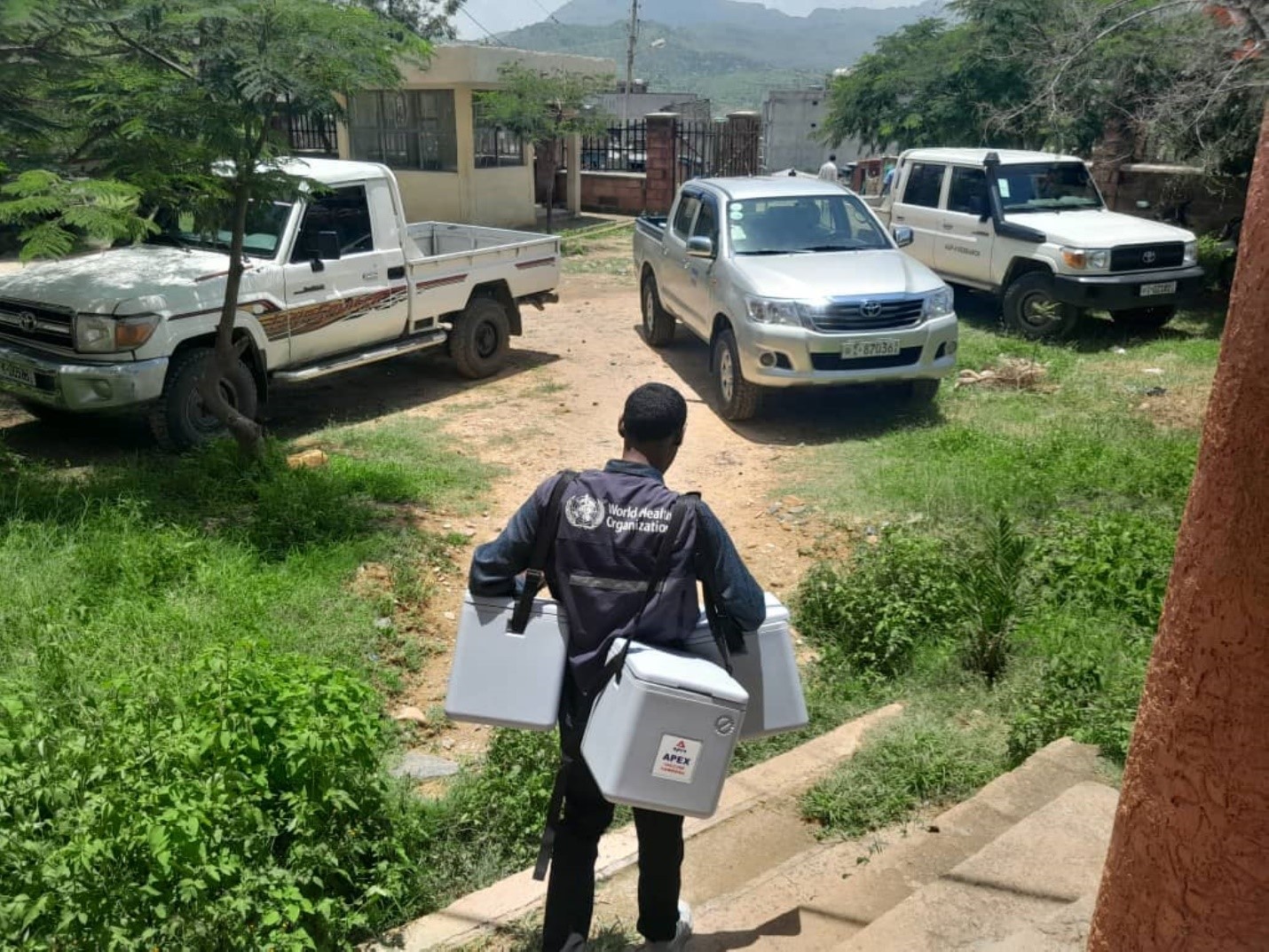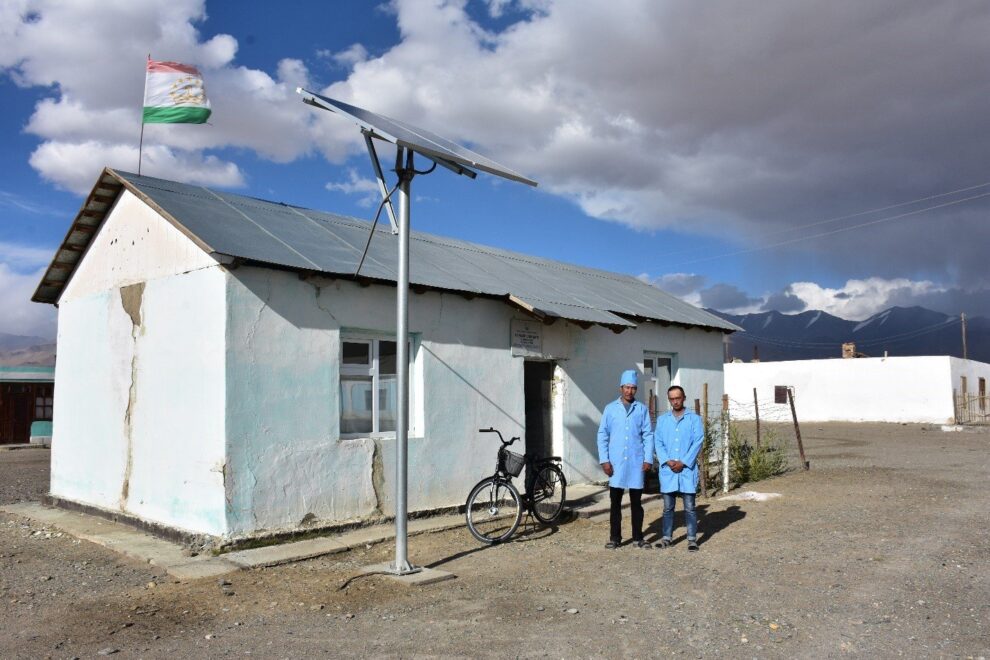WHO, with the support of its donors and partners, this month convenes three High-Level Meetings at the United Nations General Assembly to advance three of its top priorities: universal health coverage, pandemic readiness, and tuberculosis.
Some of our latest news stories provide a window into WHO’s work on these priorities across the globe:
From Tigray, Ethiopia, comes news of the vital primary care services that are protecting girls from cervical cancer and identifying unvaccinated children amid humanitarian crisis. A story from Tajikistan covers the delivery of primary health care services to yurt-dwelling nomads on one of the world’s highest plateaus.
“It is cold, and the wind makes it hard to go outside,” said Yunus, a nurse who is profiled in the story. “But we have to. It’s not only about vaccines – people get sick more often during the winter, and sometimes call us during the night. We are the only ones they can call, and we have to help them around the clock.”
Other stories touch on the fight against tuberculosis: Syrian doctors are honing their expertise to treat TB patients – often displaced people – in areas of conflict and natural disaster. In South-East Asia, meanwhile, new political commitments call for redoubled coordination among countries to end the infectious killer by 2030.
Stories and videos from Lao PDR, Sierra Leone and Tanzania show ways that WHO is collaborating with partners to build health systems strong enough to take on future pandemics.
WHO provides Syrian doctors with cutting-edge training to care for tuberculosis patients

Doctors study the X-ray of a tuberculosis patient. ©WHO
The WHO field office in Gaziantep, Türkiye, recently trained nine doctors from northwest Syria on the newest and highest standards of clinical management for tuberculosis (TB).
With the support of the United Nations Central Emergency Response Fund (CERF), WHO has provided TB centres in northwest Syria with drugs, laboratory equipment, an X-ray machine, food baskets and other supplies, and has delivered capacity-building trainings for medical staff.
“TB is one of the major causes of mortality worldwide and remains a significant threat to the most vulnerable in Syria,” said Dr Idris Elrasheed, acting Head of Office for the WHO Field Presence in Gaziantep. “Combatting the disease will always be a challenge in a country where widespread shortages of medicines and internal displacement interrupt essential lengthy treatments that are needed to prevent the development of drug-resistant TB.”
WHO South-East Asia Region commits to enhance efforts to end TB
 An estimated 587 million people are infected with tuberculosis in WHO’s South-East Asia Region. Above: a laboratory processes TB samples in Nepal, which is coping with a high burden of multidrug-resistant TB. ©WHO/David Orr
An estimated 587 million people are infected with tuberculosis in WHO’s South-East Asia Region. Above: a laboratory processes TB samples in Nepal, which is coping with a high burden of multidrug-resistant TB. ©WHO/David Orr
The countries of WHO’s South-East Region adopted a declaration in August that calls for intensifying coordination to end tuberculosis by 2030. Half of the world’s TB cases and deaths occur in that region.
“Today urgent action is needed more than ever to achieve our goal of a region free of tuberculosis, which has been menacing millions of people with disease and death, poverty and despair,” said Dr Poonam Khetrapal Singh, WHO’s Regional Director for South-East Asia.
The adoption of the Gandhinagar Declaration came in the run-up to the UN High Level Meeting on TB, set for 22 September in New York.
In Tajikistan, health care at -45˚C
 A WHO-supported clinic in Karakul village provides primary health care services to the mostly nomadic people of the area. The village stands at 3900 metres above sea level in one of the most remote parts of Tajikistan. ©WHO
A WHO-supported clinic in Karakul village provides primary health care services to the mostly nomadic people of the area. The village stands at 3900 metres above sea level in one of the most remote parts of Tajikistan. ©WHO
Harsh weather, bad roads and virtual isolation from the rest of the world are the status quo for the health workers on the Murghab plateau. Many medical students decide not to return to the area when they complete their studies.
Read more about the lives of those who come back.
Tanzania expands treatment for diabetes and other noncommunicable diseases
Watch how Tanzania introduced WHO’s package of interventions to reach people like Ms Fikiri with essential care for noncommunicable diseases.
Tanzania’s Ministry of Health, in collaboration with WHO and other partners, is making treatment for chronic diseases like diabetes routinely accessible as part of primary health care services.
Stella Fikiri is among the many people who have received a diabetes diagnosis and begun treatment for the condition at 702 facilities where the government has established services across 26 regions.
“I keep track of my numbers in a notebook that the hospital gave me,” Ms. Fikiri said. “I do everything I am advised to do, and I am seeing results.” See the full story
Sierra Leone works to stem high rates of maternal and child mortality
Since 2010, the percentage of births taking place in hospitals and with skilled birth attendants has jumped from 54% to 80% in Sierra Leone, an improvement enabled by the technical and financial support of WHO.
The country’s Ministry of Health has made maternal and child care an urgent priority to bring down its historically high rates of maternal mortality, which hover around 717 deaths per 100,000 live births.
“Our target for the next five years is to bring down maternal mortality to 300 or below,” said Dr Satu Issa, Deputy Manager of Reproductive Health and Family Planning at the country’s health ministry. “The WHO has been a very formidable force in helping us reduce maternal mortality. They have been with us every step of the way, starting with the training of our health care workers, to supportive supervision and monitoring, to coordination.”
The United States supports health systems, vaccination, in Lao PDR and Somalia

A mother and baby visit the Nachaleur Health Centre in Vientiane , Lao PDR for routine vaccinations. ©WHO/Enric Catala
Health care facilities across Lao PDR have received US$ 260 000 in equipment from the United States Agency for International Development (USAID) to help the country manage future health threats and close vaccination gaps, including gaps in COVID-19 immunization.
“This investment builds on other significant support from USAID to WHO regarding vaccination in Lao PDR, including outreach and community engagement for older adults, people with disabilities, minority groups, and others in need,” said Dr. Ying-Ru Lo, WHO Representative to Lao PDR. “We wholeheartedly thank USAID for their generous and life-saving support.”
In Somalia, a one-year campaign supported by USAID, WHO and the country’s government has succeeded in vaccinating almost half of the adult population for COVID-19.
“Considering the fragility of our health system, achieving such a high rate of the primary COVID-19 vaccination series in Somalia is no small accomplishment,” said Dr Mukhtar Abdi Shube, the Head of Vaccines and Immunization Programme at the Federal Ministry of Health. “It puts Somalia on par with the more stable and advanced countries in Africa and elsewhere. The project helped address existing gaps in our immunization services and infrastructure, such as coordination, surveillance, shortage of vaccinators, and an operational response to COVID-19.”
 Vaccination teams at work in Somalia. ©WHO/Ismail Taxta
Vaccination teams at work in Somalia. ©WHO/Ismail Taxta
Tigray carries out an integrated campaign of vaccination and health screening
 A health worker participates in the vaccination campaign in Tigray, Ethiopia. ©WHO
A health worker participates in the vaccination campaign in Tigray, Ethiopia. ©WHO
Fighting to end cervical cancer, WHO Ethiopia and partners worked together in August to carry out a campaign to vaccinate girls in the Tigray region for human papillomavirus (HPV), the virus that causes the disease.
While administering catch-up vaccinations, the campaign identified and immunized more than 3500 “zero-dose” children who had never received any vaccine. The campaign also provided health screenings to identify clubfoot in children and obstetric fistula and uterine prolapses in women.
“This integrated service delivery contributes to saving lives and reducing morbidity from a variety of preventable and treatable diseases and conditions. It is very essential to ensure equitable access by reaching the unreached community,” said Dr. Nonhlanhla Dlamini, Officer in Charge, WHO Ethiopia.
Partners in the effort included the US Centers for Disease Control, Girls Effect, Project Hope, PSI, Tigray Regional Health Bureau, UNICEF and USAID.
Source: World Health Organization















